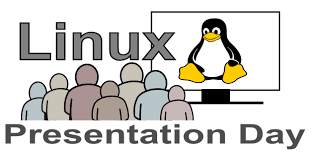
OVERVIEW OF LINUX ADMINISTRATION
Linux Administration refers to the process of managing and maintaining Linux-based systems, including servers, desktops, and embedded systems. It involves a wide range of tasks aimed at ensuring that the system is running efficiently, securely, and reliably.
🛠️ Key Responsibilities:
User & Permission Management
Create, delete, and manage users and groups.
Assign appropriate file and directory permissions.
System Monitoring & Performance Tuning
Monitor CPU, memory, disk usage, and logs.
Identify and resolve performance bottlenecks.
Package & Software Management
Install, update, and remove software using tools like
yum,apt, ordnf.
Service & Process Management
Start, stop, and manage services using
systemdor older tools likeinit.Monitor running processes and troubleshoot crashes or high resource usage.
Disk & Filesystem Management
Partition disks, format with file systems (e.g., ext4, xfs), and mount/unmount volumes.
Manage disk quotas and monitor usage.
Networking Configuration
Configure IP addresses, DNS, routing, firewalls (iptables/nftables), and troubleshoot connectivity issues.
Security Hardening
Configure firewalls, SELinux/AppArmor, and SSH.
Apply security patches and monitor for vulnerabilities.
Backup & Recovery
Schedule regular backups and ensure reliable recovery procedures.
Use tools like
rsync,tar, or backup suites like Bacula or Amanda.
Automation & Scripting
Automate repetitive tasks using shell scripts or configuration tools (e.g., Ansible, Puppet).
System Updates & Patch Management
Regularly update the system for security and performance using
yum,dnf, orapt.
📍 Where It’s Used:
Linux Administration is critical in:
Web and application servers
Database servers
Cloud infrastructure (AWS, Azure, GCP)
DevOps pipelines
Embedded systems (IoT, routers, etc.)
Linux Administration –> Duration: 45 Days
Fees: 5,000/-
Shell Scripting: –> Duration 1 Month
Fees: 5000/-
Pre-Requisite: Linux Basics (1 Week)
Linux Administration Course Contents
Essentials
- Overview of UNIX
- History of Linux
- Linux architecture
- Kernel
- Shell
Linux Basics
- Displaying System date and time :date
- Displaying present and working users : who and whoami
- Calculator : bc
- Machine characteristics : uname
- Knowing a terminal : tty
- Displaying a calendar : cal
- Displaying a Message : echo and print
- Linux file Hierarchy concepts
- Listing files and directories : ls
- More and less commands
- The seven fundamental file types
- Creating and viewing the files : cat
- Creating, Modifying, changing and removing directories : mkdir, cd, rmdir
- Moving and Renaming files : mv
- Copying files : cp command with attributes
- Deleting a File : rm command with attributes
- Links: hard Link and Soft Link
- Absolute path name
- Relative path name
Compressions
- Zip
- Compress
- Gzip
- Bzip2
File Attributes
- Chmod
- Chown
Filter commands
- Which, Whereis, locate whatis
- Find command with attributes
String Processing
- Head, Tail
- wc,
- grep
Vi Editor
- Overview of vi editor
- Three modes of vi editor
- Saving and Quitting
- Navigation
- Editing a Text
- Undoing changes
- Yank and Paste
- Changing and Deleting
System Administration
Disk Partitioning and Mounting
- Creating partitions by using “fdisk”
- Formatting the file systems “mkfs, mkfs.ext2, mkfs.ext3, mkfs.ext4, mkfs.xfs”
- Mounting and unmounting the file systems
- Troubleshooting the file systems issues
Users and Groups Administration
- Creating and deleting users
- Modifying Users profile
- Creating and deleting Groups
- Adding users into group
- Monitoring the users
- Creation of sudo users
- Creation of Disk Quotas
- Troubleshooting user related issues
Run Levels
- Understanding different types of Run Levels
- Understanding different type os shutdown commands
System Booting Process
Resource Package Management (RPM)
- Querying , Installing, Updating and Removing packages by using “RPM”
- Managing software packages by using “YUM” (Yellowdog Update Manager)
LVM
- Creation of LVM partitions
- Resizing the LVM partitions
RAID (Redundant Array of Inexpensive or Independent disks)
- Understanding different Types of RAID
- RAID Configuration
Backup & Restore
- Basics of Backup and Restore
- Backup of Restore using tar command
- Understanding zip, gzip, unzip, bzip, bunzip
Automation of Jobs
- Understanding at jobs and Cron Jobs
Network Administration
- Networking
- Configuring network card with IP address
- Creating the logical IP Address
- Adding, removing and Changing the IP address
FTP Service
- Configuring VSFTPD Service
- Uploading and Downloading files by using different FTP client
NFS (Network File System)
- Configuration of NFS Server
- Configuration of NFS Client
DNS (Domain Naming Service)
- Understanding DNS
- Configuration of DNS Server
- Configuration of DNS client
DHCP (Dynamic Host Configuration Protocol)
- Understanding DHCP Server
- Configuration of DHCP Server
TELNET, SSH, SCP
- Concept and Configuration of telnet server and telnet clients
- Understanding SSH and SCP concept and configuration
Network Installation
- Installation through FTP/NFS servers
APACHE (Web Server)
- Understanding the concept of Web Server
- Configuration of Web Server
- Configuration of Virtual Hosting
Looking for Reading Material? Click Here
